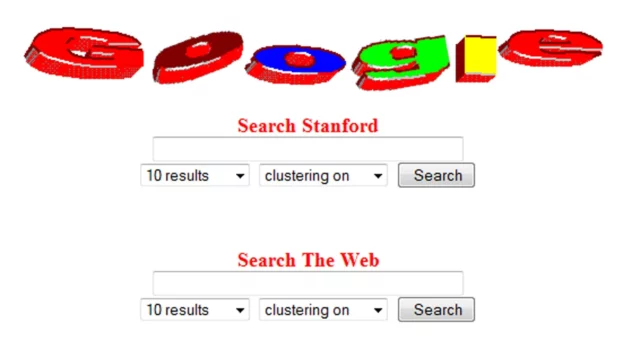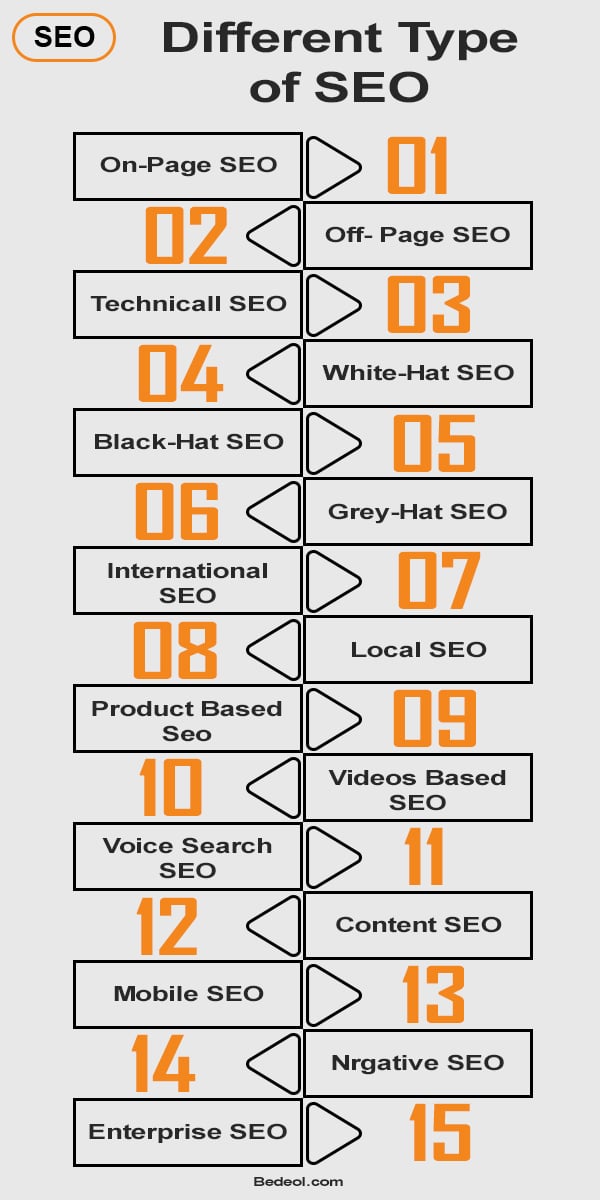The year was 1997 when the acronym SEO first surfaced in the world. Those were the days when Google and Yahoo were nothing more than offline directories that paid silent bow to the internet.

Anyone who is looking at this logo for the first time, may find it hard to believe that it’s the same Google which answers their search queries today.
Nonetheless, the years have changed but business goals still remain the same, revolving mostly around marketing, revenue and profit. Gaining prominent place in the search results can be considered as the main reason, why businesses resort to SEO.
Search engines like Google were quick enough to understand this and made the shift toward SEO to help reliable businesses get to the customers 24/7 from anywhere.
That’s when the idea of SEO actually took off.
Why exactly SEO?
After a brief recourse to history, it’s time to understand the unchallenged rise of Search engine optimization in the digital marketing.
Well, it all brings us to one concept that is to reach potential customers with effective strategies. Take the example of Billboard Ads near your residence. Their purpose is to retain, attract, and influence, the existing and future audience.
As times were changing, search engines felt the need to adapt and innovate by bringing customers real-time, relevant, and reliable results. It resulted in the introduction of SEO, the marketing solution that adds long term gains to businesses.
In short, SEO is a long term investment game.
Different Types of SEO

After 20 years the landscape of SEO has widened. Marketing experts call it the key to success in digital era. However knowing which SEO type is suitable for your business can be challenging.
That’s why, we have curated a list that can help you select one from the top 15 main types of SEO. Keep reading and learn which strategy would benefit you the most in the long-run.
On-page SEO
On-page SEO focuses on the content on your website to help you rank higher on search engines and increase traffic. For this, it’s aim will be to bring more clarity and coherence in the content, so visitors can understand the business.
For instance, assigning keywords to specific webpages, adding keyword-dense blogs, optimizing title tags, and updating image descriptions are few services that on-page SEO provides.
Also, the recent update by Google clearly states that the websites with helpful content will rank higher than those with duplicated or irrelevant content.
So, brands which already have a website which hasn’t been optimized according to times, consult a SEO expert now.
Off-Page SEO
Anything that happens off your website that could influence your website’s rankings is what SEO experts call Off-page SEO. It deals with backlinks, social media, digital PR, etc.
Here’s an example: Suppose you wrote an informative article on ‘Top places to visit in Summers in 2023’. Once published, a travel website writes a blog citing your article. This is backlinking.
Anyone who will read the blog on that website will soon land up on yours with the help of backlink.
Google considers more backlinks as a sign of authoritativeness, however the key to it is earning backlinks from a reputable website.
Technical SEO
Have you ever heard, slow and steady wins the race? If you had, then don’t apply it on your website. A slow website makes it harder for visitors to navigate, further lowering your search engine result page rankings (SERPs).
Technical SEO is used to eliminate all of these backend issues that reduce the user experience (UX).
After its application, it will focus on slow-loading pages, broken images, and improving navigation on your website.
So, users can have a better experience when they explore your website that ultimately gives search engines a sign to crawl it.
White-hat SEO
To many it may sound a little new, however white-hat SEO is the crux. It adheres strictly to the search engines, so your website aligns with their code of conduct.
It aims at improving site’s integrity while prioritizing top quality content, keyword integration, meta descriptions, and navigation.
Black-hat SEO
Unlike white-hat, Black-hat SEO finds and exploits the weak areas of search engine algorithms with strategies like keywords stuffing, paid links, cloaking and spamming.
Though all these techniques are known to shoot up ranking on SERPs instantly, the benefits are riddled with risks and short-term.
If Google or Bing detected any illicit activity as mentioned above, there’s high possibility of getting flagged or blacklisted.
Grey-hat SEO
This SEO offers a middle path between White and Black hat SEO types. It does involve risk but will not get your website flagged.
It tries to manipulate search engines to improve ranking which if noticed can lead to some major consequences.
International SEO
As the name suggests, this SEO type is suitable for brands that work globally. It targets your international audience by using effective strategies, so you maximize earnings without having to pay a lot.
It’s aim is to increase the reliability of any business by improving its online presence and connecting customers with the brand genuinely.
Local SEO

If your business has a physical presence, use local SEO to increase the foot traffic. It is as simple as getting space in a directory, except it’s digital.
Let’s say you or your client owns a grocery store in XYZ location. Any buyer who lives near and searches for ‘best grocery stores near me’, will instantly get a list of store profiles (i.e. Google my business) on SERPs.
This helps you acquire more local traffic.
The best way to use local SEO is to work on on-page, off-page, and technical SEO. It will involve managing citations, setting up a GMB profile, using local keywords, etc.
Product Based/ E-commerce SEO

Do you own an online store? Invest in e-commerce SEO to gain more visibility and gain more traffic. It helps your store rank higher on SERPs making it easier for customers to reach you.
It involves all other tasks of general SEO with more focus on the structure and design of the website.
In other words, the more appealing and simplified your landing page will look, it will retain more visitors, and ultimately increasing revenue.
Video based SEO
SEO is applicable on almost every platform. Video-based SEO is another type which helps you gain more exposure on platforms like YouTube. Vloggers, Influencers, and businesses can use it engage with their audiences and boost their subscribers count with the help of video titles, description tags, video duration, etc.
Voice Search SEO
Alexa, Siri, and Google assistant are all examples of voice-search SEO. These voice assistant tools use NLP (natural language processing) to find relevant answers to user’s inquiry.
Therefore, focusing on long-tail keywords and conversational content is important to optimize content specifically for voice-searches.
Content SEO
Graphics, blogs, and videos, are the secret ingredient in SEO to rank higher on SERPs. If you want to take your business/brand on top, then high-quality, informative, and relevant content is the key. So, build a creative content calendar, find relevant keywords, and get the SEO rolling up your business.
Mobile SEO
A quick question– are you reading this blog on your mobile or some other device?
Well, it could be a PC, laptop or a tablet. But one thing we must acknowledge is that majority of the internet searches happen with a mobile. This means, your website has to be optimized to fit different specifications of devices.
Mobile search engine optimization can make your website user-friendly by focusing on its style, structure, and loading speed.
It’s main focus would be on graphics, text, and images, so they align perfectly in less seconds, when a visitor lands on the site.
Negative SEO
Does negative ring a bell? Figuring how SEO can be negative and in your favour can be a task for SEO beginners. So, here’s an example:
Suppose two luxury clothing brands like Dior and Chanel get into a heated debate over the launch of a product. The design is similar, and both are fighting who gets to launch it first.
Obviously, one brand has copied it. But how to gain customers’ attention before any competitor wins?
That’s when the SEO and social media teams of Dior start posting negative and fake reviews on Chanel’s website.
Above is an incredibly simple example of what Negative SEO may look like. It can include fake reviews, adding low-quality links to website or pretty much anything that brings your opponent site’s rankings down.
The ultimate goal of this type of SEO is to benefit your brand at all costs.
However, it is not advisable as it may end up your business getting sued or battling legal issues.
Enterprise SEO
Implementing SEO strategies on a large-scale for corporations with complicated websites that involve multiple stakeholders is called Enterprise SEO.
It conducts technical audits regularly, changes keyword strategies to stay ahead of the game, and optimises content to achieve business goals faster.
Wrapping Up!
Bringing more traffic to a website organically has never been easier. With changing algorithms and updates, it’s further becoming difficult for businesses to decode the secret to rank higher on SERPs. Therefore, it is important to know your business model first, and then select a strategy that best works.